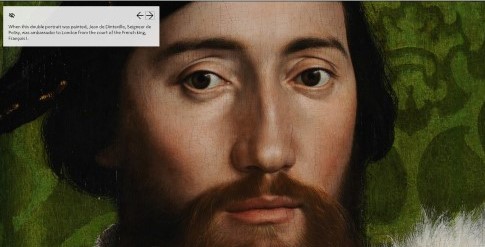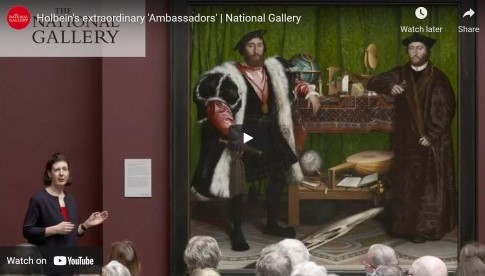Hans Holbein | The Ambassadors
About this Painting
Jean de Dinteville, the man on the left, is shown on his second diplomatic mission to England on behalf of Francis I, King of France. To the right is his close friend, Georges de Selve, Bishop of Lavaur. This portrait was painted at a time of religious upheaval in Europe. Although the pope had refused to annull Henry VIII, King of England’s marriage to Catherine of Aragon which resulted in a break with the Roman Catholic Church, in 1533 he married Anne Boleyn. The array of objects on the table seem to allude to discord; the arithmetic book, for example, is open at the page concerning mathematical division.
The portrait is a supreme display of Holbein’s skill in composing images and in manipulating oil paint to recreate a variety of textures. If viewed from a particular angle the elongated shape between the men’s feet becomes a skull. Equally hidden at the top left of the picture is a crucifix that hints at the hope of redemption in the resurrected Christ (text courtesy of the National Gallery).
An in-depth analysis of this painting is available on The National Gallery Website.
Viewer
Further Resources

through cultural resources. Explore their digital story here.

Susan Foister, discuss Hans Holbein the Younger, his painting, and their
connections to the Tutor court. Click here for the full video.